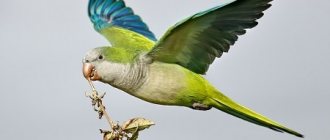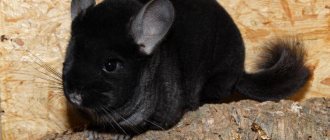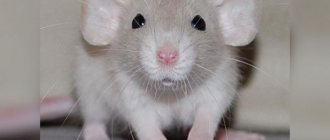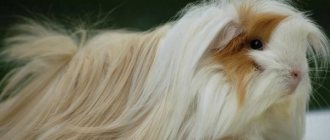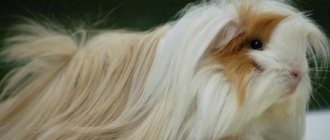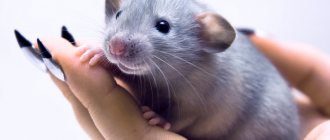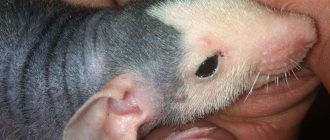- Wild animals
- >>
- Birds
Rosella is one of the most beautiful parrots, distinguished from other birds of this species by the extremely unusual scaly color of its feathers. The scientific name of the species is Platycercus eximius, and this bird was first described only in the mid-19th century, when the first scientists reached Australia.
Origin of the species and description
Photo: Rosella
Rosella, as a separate species, formed several thousand years ago. Reliable descriptions of the parrot are found in the legends of the Australian Aborigines. Ornithological scientists claim that the rosella is as ancient a species as the cockatoo or cockatiel.
This type of parrot is distinguished by its incredibly colorful plumage, beauty and natural grace. Rosella is a medium-sized parrot. The body length of the bird is from 25 to 35 centimeters, the weight of the bird does not exceed 50 grams, and the wingspan is about 15 centimeters.
Video: Rosella
The color of the bird stands out especially. The upper back is black (sometimes interspersed with white), but each back feather ends in a greenish edge. Towards the very bottom of the back, the feathers form a large greenish area, giving the parrot an elegant look. There are multi-colored spots on the bird’s cheeks, the color of which depends on the subspecies of rosella.
A distinctive feature of the rosella is its wide tail, which is not typical for the parrot family. The tail plumage of the rosella is designed in such a way that it forms a kind of steps. Thanks to such an unusual tail structure, the rosella can quickly maneuver, which allows the bird to fly even in the densest forest.
Interesting fact: Males and females of rosella differ from each other only in the brightness of their color. Males are much brighter than females, which helps them attract partners during the mating season. In other parameters (size, weight, wingspan), females and males of rosella are almost identical.
Conditions of detention
The Rosella parrot and its maintenance require the owner to know the rules and characteristics of his ward. Among them:
- During acclimatization, the parrot needs special attention.
- New food is introduced into the diet gradually, in small portions.
- Rosellas need to sharpen their beak, so it's worth making sure it has the right tree branch.
- For nutrition, experts recommend selecting small seeds.
- Birds like to take baths, so it would be a good idea to install a special bathing suit.
- The optimal air humidity at the location of the cage is no more than 50–60%.
- Parrots need sunbathing and additional lighting with suitable lamps.
Cell
The cage for rosella must be of a suitable size and meet the following parameters: height - at least 1.5 meters, width - approximately 4 meters, the distance between the rods - 2-2.5 cm.
Particular attention should be paid to the paint on the cage bars. It should not contain lead, and ideally not be used at all.
For the bird’s convenience, you should take care in advance of the presence of perches in the cage at different levels, a house, as well as the presence of entertainment - stairs, swings, safe toys.
For the convenience of the owner, it is advisable to make the bottom of the cage retractable, on which sand or sawdust can be placed. The layer should be approximately 1 cm thick.
Diet
For a long life, this bird requires proper nutrition, which includes:
- Berries.
- Fruits and vegetables cut into small pieces.
- Grain mixtures (millet, pre-soaked corn, etc.).
- Sliced boiled eggs.
- Cottage cheese.
- Bloodworm.
- Mealworms.
- Insects.
- Chalk in small pieces.
Experts advise providing the bird with food 1-2 times a day. We must not forget about the importance of the presence of water in the parrot’s habitat.
Taming
The friendliness and calm disposition of the bird allows you to make friends with it without any problems. The main thing is to start contact with rosella gradually, first offering food from the palm of your hand. It is best to get acquainted with a bird at the age of 1-1.5 years.
Does he speak or not?
The Rosella parrot does not speak very well. With diligent training, a bird, at best, remembers about ten words, usually much less. Despite this, the parrot perfectly remembers the sounds of the surrounding world and will be able to reproduce them without problems.
Breeding
Getting the chicks of these birds at home is a rather difficult undertaking. The first problem that the owner faces is the selection of a male and a female, since Rosella has poorly defined sexual characteristics. The second, but more solvable, problem is the need to select cages for other birds, if any, because parrots will need their own space.
The owner of the birds should also think in advance about a place for the nest, the role of which can easily be filled by a special house, the dimensions of which are 25–45 cm.
If everything goes well, then the eggs in the nest should be expected in 14–21 days, and after some more time, the chicks themselves will appear.
During incubation, it is worth taking special care of the birds’ nutrition, as well as what they will feed their chicks in the future.
How long does a Rosella parrot live?
On average, rosellas live 15–20 years if you properly care for them and follow all the requirements and recommendations of bird keeping experts.
However, there are exceptions based on age. For example, some sources say that these birds can live 25 or 30 years.
Diseases
If kept and fed improperly, parrots become more susceptible to various diseases, including:
- Poisoning.
- Fungal inflammation.
- Diseases caused by infections.
- Goiter inflammation.
- Diseases affecting the digestive tract.
Appearance and features
Photo: What rosella looks like
The size, wingspan and color of the rosella depend on the subspecies to which the bird belongs.
At this point in time, ornithologists distinguish the following subspecies of parrots:
- variegated (classic) rosella. The most common type of parrot. It is found almost throughout Australia, as well as in the Tasman Islands. The size of the bird is 30-33 centimeters, and the distinctive feature of the species is its very beautiful plumage with a greenish border. As a rule, this particular type of parrot is bred at home more often than others, since the subspecies is distinguished by its phlegmatic character and high adaptive abilities;
- red (penantine) rosella. The largest bird in the family. The size of an adult reaches 36-37 centimeters. The parrot's head and chest are bright red, its belly is green, and its back is black. At the same time, there are pale blue spots on the bird’s cheeks. The red parrot is the most aggressive of the entire species and often conflicts with smaller relatives;
- green rosella. Parrots of this subspecies can also reach a length of 35-36 centimeters, but unlike their red counterparts they are much more peaceful. The subspecies received its name due to the fact that the plumage on the head, neck and chest of the bird is green. What makes the parrot colorful is that the feathers on its forehead are red and its neck is dark blue. The bird lives in the tropical forests of Australia and Tasmania, and its green color helps it camouflage;
- pale blue rosella. Perhaps the least beautiful subspecies of parrot. Unlike its brightly colored counterparts, this parrot looks very unsightly. Its back is covered with a black feather with a pale yellow edge, a light blue head and the same belly. Only the red tail feathers add piquancy to the color;
- yellow-cheeked rosella. The smallest and most beautiful parrot of the species. An adult reaches 25-27 centimeters, but the bird has very bright plumage. The green back with black edging, red head, chest and abdomen and yellow spots on the cheeks make the parrot very elegant. Quite often this bird is bred in captivity, since its small size allows the parrot to feel great in ordinary cages.
Price
It is better to buy rosella when it is no more than six months old. Young individuals tolerate a change of environment more easily and get used to new conditions and owners.
Their prices depend on the place of purchase, the type and age of the parrot. For greater reliability, you need to purchase from breeders with a proven reputation. The cost of the most common type - variegated rosella - is 7 - 7.5 thousand rubles.
More rare species cost from 8 thousand rubles. The price for special order copies reaches 10 thousand rubles.
For those who love birds and are willing to keep them at home, any type of rosella can become a real family favorite. And for the efforts made, he will repay you with minutes of pleasant observation, communication and melodic trills.
If you liked the article or have something to add, then leave your comments and also join our VKontakte group.
Where does rosella live?
Photo: Rosella in Australia
The birthplace of the rosella, like many other exotic birds, is Australia. For a long time, this continent was cut off from the rest of the land, and this became the reason for the creation of a unique ecological system. In the last hundred years, birds have been released on several more islands, but only the Tasman Islands, whose climate is very similar to Australia, have taken root.
Birds prefer to settle in the shroud, on the edges of wild forests or in the Australian bush (large areas covered with tall bushes). Rosella's wings are not adapted for long flights, and therefore they do not mix over long distances, preferring to spend their entire lives in the same territory. What Rosella lacks the ability to fly over long distances, it makes up for with the ability to move quickly on the ground and even live in abandoned rabbit holes.
After people began to actively explore the Australian bush, parrots began to settle in parks and even in small gardens near cottages. Thanks to the intelligence of birds and their peaceful nature, parrots get along well with people and are not at all embarrassed by their presence.
Rosella reproduce well in captivity, live well at home, and the main requirement for their maintenance is high temperature. Birds are very thermophilic and frankly feel bad if the air temperature drops below +15 degrees.
Necessary equipment
Bath
This representative of birds loves to swim. It is better to meet him halfway and provide him with a container of suitable size with clean, warm water.
Humidity measuring device
However, damp air is harmful to parrots. You need to buy the appropriate device and ensure that the humidity in the room does not rise above sixty percent. If it crosses the required mark, another device will be required.
Heater
It is impossible to dry the air in the room and raise the temperature to the required twenty-five degrees without it.
Need a heater to maintain temperature
Lamp
People from the tropics need warmth and light. In our climate, the sun is clearly not enough, so owners purchase a special lamp for additional illumination in order to extend daylight hours.
Preferred diet
They enjoy eating mealworms, greens, vegetables, fruits, berries, and corn (it needs to be soaked). In order for your pets to exercise their beaks and improve their gnawing skills, it is better to immediately provide them with tree branches (only permitted ones). Otherwise, it’s the end of baseboards, wallpaper and, perhaps, electrical wiring.
Communication
They adapt to captivity quickly and easily. Communication with the owner is necessary, the birds almost immediately get used to it, they always feel the mood, try to help, and communicate.
Variegated rosellas are especially good in this regard. Good-natured, calm, friendly, unpretentious. Rosellas may not speak, but they sing very beautifully.
Communication with a parrot
What does rosella eat?
Photo: Rosella parrot
By and large, the Rosella's diet is no different from that of any other parrot. The difference is that Rosella spends most of the day on the ground, which means that the bird’s main diet consists of plant seeds, cereals and young shoots.
Parrots enjoy eating:
- fresh vegetables;
- fruits high in sugar;
- grains and seeds (including agricultural plants);
- young plants;
- For better digestion, parrots swallow small pebbles or small limestone shells.
Rosella are good hunters. They happily eat insects and caterpillars that harm plants. Therefore, farmers never drive parrots away from their fields, knowing that they are beneficial. If the bird is kept at home, then in addition to standard food for parrots, other food is also needed.
Rosella must be given cottage cheese and boiled eggs, as these products are excellent sources of calcium. Birds love bananas, juicy pears and apples. But you need to be careful with white bread. Parrots eat it well, but the amount eaten should be limited, as it can cause fermentation in the stomach and cause the rosella to die.
It is extremely important not to restrict rosella in water. Unlike finches, parrots are not able to go without liquid for several days and must only have access to clean drinking water.
Now you know how to care for and what to feed rosella. Let's see how a parrot survives in the wild.
How to choose a parrot
It is advisable to buy birds at the age of 5-6 weeks and only from those breeders who keep their feathered charges in proper conditions.
When choosing a parrot, you should pay attention to the following signs:
- absence of growths on the beak and paws;
- clear eyes;
- shiny plumage without bald spots;
- lack of redness around the anus;
- active and energetic behavior.
A Rosella parrot costs $80-170. Moreover, the price of a bird is determined by its age and the presence of a health certificate.
Rosella is a medium-sized parrot with bright scaly plumage and a cheerful, sociable disposition. He will be an excellent pet for families with older children and is absolutely not suitable for busy people who value silence in the house.
Features of character and lifestyle
Photo: Rosella bird
Rosellas are gregarious birds that live together in small groups of 20-30 individuals. Birds are very friendly and cheerful, quickly adapt to changing conditions and are able to live in close proximity to humans. Rosellas are quite smart, careful and capable of coordinating actions.
The birds spend both daytime and nighttime together. Birds also fly out in large groups to get food. Only during the nesting period do the birds separate into pairs, but continue to remain in close proximity to each other. It often happens that 2-3 parrot nests are placed in an area of several square meters.
Rosella builds nests between tree branches at a height of 5-7 meters from ground level. It is not uncommon for parrots to occupy hollows in trees or even vacant rabbit holes on the ground. Despite the fact that in the wild, parrots live in flocks, at home they quickly adapt to life alone, willingly make contact with humans and are able to learn to sit on a shoulder.
This type of bird is capable of learning a few words, but more readily and quickly, rosellas remember frequently repeated mechanical sounds and simple melodies, which they hear many times a day. There are cases where rosellas skillfully imitated the sound of a running engine or the ringtone on a smartphone.
Social structure and reproduction
Photo: Male Rosella
The nesting period for parrots occurs in October-November. At this time, there is enough water in the Australian bush for birds to breed without fear of sudden drought. The male touchingly cares for the female. He performs courtship dances, puffs up his feathers and makes melodious trills.
The male also offers the female a treat (usually captured insects), and if she accepts the offering, a stable pair is formed. Both parents build the nest. As mentioned above, the nest can be made not only between the branches of a tree, but also in hollows, and even in burrows.
Dry twigs and tufts of grass are used for construction, and the inside of the nest is lined with down, moss and feathers. As a rule, 4-8 eggs appear in a nest, and their number depends not only on the fertility of the female, but also on climatic conditions. There are fewer eggs in a dry year than in a rainy year.
Hatching the eggs takes 25 days, after which the chicks appear, covered with dark down. Only after a month do the chicks leave the nest, but for several more weeks they remain with their parents and master the science of life in a large flock.
Interesting fact: Both during the incubation of eggs and during the growth of chicks, exclusively the male is engaged in searching for prey. For two months he feeds both the female and the offspring. During this period, male rosella are especially active in catching insects and often the total weight of prey per day is equal to the weight of the bird itself.
Sexual maturity occurs in parrots by 15 months, after which they are able to form a pair and bring new offspring.
Colorful appearance
These birds are distinguished by bright colors, combining from 7 to 10 shades and a scaly pattern on the wings. As a rule, the neck and chest of the bird are red, the belly is yellow or light green, and the tail is blue-blue. The Rosella parrot attracts attention with its wings, on the black feathers of which multi-colored scales seem to be painted, and on the sides there are blue stripes. Appearance makes it easy to distinguish a male parrot from a female. The latter are duller and have a smaller head.
The Australian Rosella parrot is distinguished from others by its unusually flat tail. In its center there are 4 feathers of equal length. To the right and left of them grow smaller feathers, and each subsequent feather, if counted from the middle, is always shorter than the previous one. Visually, such a tail resembles a fan, especially when the parrot opens it. The beak of these birds is rounded and rather weak.
Natural enemies of rosella
Photo: What rosella looks like
In the wild, rosella has many enemies. This is due to the fact that the bird is not capable of long flights and is not very agile in the air. Adding to the danger is the fact that rosella often settles in burrows, which makes the nest accessible to terrestrial predators. The greatest threat to rosella comes from winged predators. The bird often becomes prey for hawks, which easily catch such clumsy prey.
However, the main enemies of the parrot can be considered:
- large carnivorous snakes;
- lizards;
- winged predators.
Nests located on the ground or on a tree at a low altitude are most at risk. It is easy for snakes to climb to a height of several meters and feast on eggs or chicks. In turn, lizards can only reach rosella nests, which are located at a height of no more than a couple of meters.
Even indoor cats can pose a threat. Cats can catch a gaping adult and do not deny themselves the pleasure of destroying the clutch or dining on the chicks. But human activity practically does not bother the birds.
Even if people’s houses are close to bird nesting sites, parrots are not at all embarrassed by this factor. It is not uncommon for rosellas to live in parks and orchards, a few meters from apartment buildings.
Owner reviews
Rosella parrots love free space, so it is important to periodically let them out of the aviary or cage. This type of poultry is very friendly and tries to please the owner and his entire family. To avoid diseases, it is very important to monitor the temperature in the room, and the parrot feels most comfortable at 20-22°C . The feeder and drinking bowl should be made hanging, and the most convenient diameter of the bathtub for bathing is 20-22 cm.
However, having such a feathered pet is highly not recommended for those who have no experience in keeping parrots at all. After taming a rosella, it will need to be constantly given a sufficient amount of attention. Out of boredom and resentment, such a pet parrot becomes loud and extremely noisy, and is also capable of attracting the owner’s attention by damaging interior items. Many owners of such birds are faced with the fact that their pet “sharpens” its beak on any pliable surfaces in the room, including wires, expensive furniture and household appliances.
Tags: platycercus, parrot diseases, types of parrots, budgerigars, parrot health, parrots, rosella parrot, Birds, rosella, house keeping
